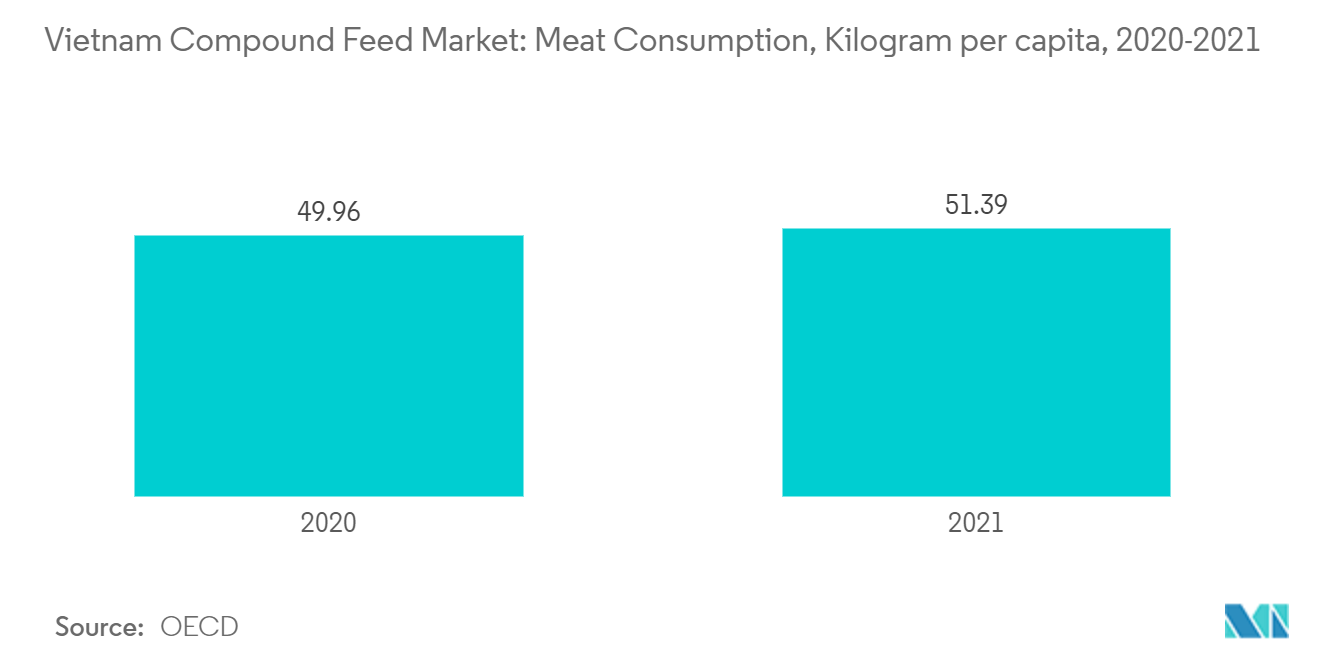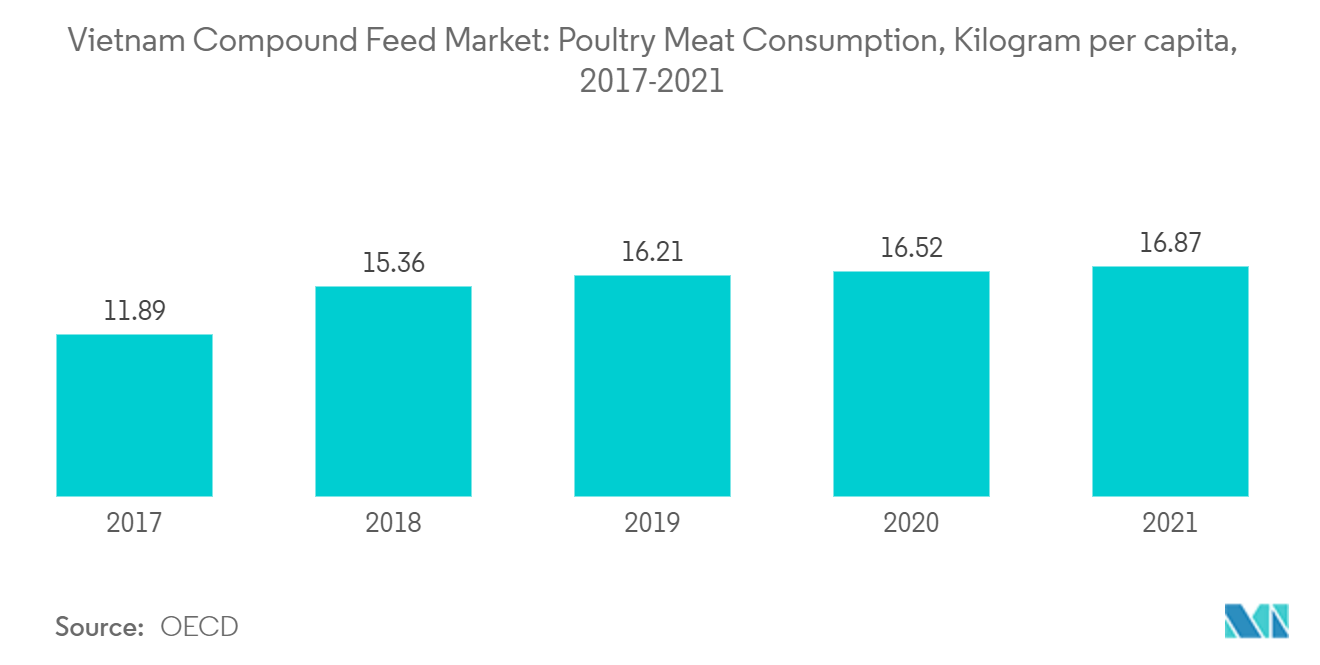Market Trends of Vietnam Compound Feed Industry
This section covers the major market trends shaping the Vietnam Compound Feed Market according to our research experts:
Increasing Demand for Meat and Meat-based Products
The demand for higher-quality meat at lower prices has been witnessing an upward trend in Vietnam. Economic growth has boosted the consumers' purchasing power, most of which is directed to the consumption of livestock meat. For instance, according to the OECD, per capita, meat consumption has increased from 49.9 kg in 2020 to 51.3 kg in 2021. The increase in meat consumption increases the demand for compound feed, contributing to market growth.
Along with this, the Vietnamese government, agencies, and ministries have introduced several schemes in the past, such as the livestock development strategy, to augment the livestock sector, which resulted in an increment in production and meat consumption. According to Law on Animal Husbandry, there is a need to apply science and technology in livestock production to improve the productivity, quality, efficiency, and competitiveness of the animal husbandry sector, to ensure food safety, epidemic safety, environmental protection, and to cope with climate changes.
Moreover, Vietnam's import demand for corn and grain by-products for animal feed has been growing. Corn account for the majority, while the rest will be wheat and barley, reflecting the trends of the meat industry. Therefore, the favorable government policies for animal husbandry and the demand for meat strengthen the compound feed market in the country during the forecast period.

The Poultry Segment Dominates the Market
Poultry feed is the highest consumed feed across the country due to growing consumer preferences for chicken, quail, and duck meat. The meat of poultry and eggs are referred to as the most important protein sources by the people in Vietnam thereby increasing consumption. For instance, per capita poultry meat consumption has raised from 11.8 kg in 2017 to 16.8 kg in 2021 which showcases the high demand for poultry and poultry-based products. It is also considered the second-largest meat source in the country. So, the poultry population is increasing for several years and reached 512.7 million in 2020 registering an annual growth rate of 5.1%, according to the National Institute of Animal Science, Vietnam. This increase in the population of poultry and its meat demand is raising the demand for compound feed in the country.
Along with this, poultry production is an important source of income for many rural households in the country. Many small and medium-level farmers are involved in poultry production. Additionally, in rural areas, cockfights are held annually in Vietnamese festivals. Hence, farmers in the country raise more cocks for this main function, which creates more demand for poultry in the country. Thus, this increase in demand makes poultry feed the largest segment.
Poultry feed was the most consumed commodity due to the public predilection for white chicken and duck flesh. This is raising the poultry meat production especially chicken. For instance, according to the Food and Agriculture Organization (FAO), the production of chicken meat increased from 786,354 metric ton in 2017 to 1,146,318 metric ton in 2020, registering an increase of 45.7%. Thus, the inflating production of meat indicates that the production of chicken and duck is also expanding, which further contributes to the demand for and production of feed.


